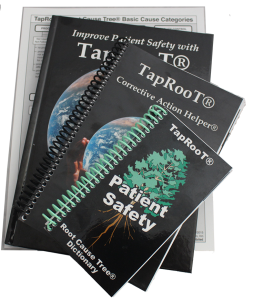Patient Safety Takes a Step Forward with “Black Boxes”

Hospitals in the U.S., Canada, and Europe are beginning to test “Operating Room Black Boxes” to improve patient safety. The Black Boxes record data that can help identify problems that lead to poor patient safety outcomes. The data is mined to discover how distractions and loud noises in the operating room cause mistakes that impact patient safety.
Learning from Past Patient Safety Safeguards
In the past, many patient safety safeguards were designed and implemented to reduce the risks that could lead to patient harm. For example, today it’s common for operating room doors to open an average of 41 times during a procedure and occasionally remain open for minutes at a time. The unnecessary opening of doors and keeping them open increase the risk of infections. In the past, doors to the operating room were sometimes locked to prevent the doors from opening and allowing infectious agents into the room. That safeguard is no longer common because it is burdensome when supplies or equipment are brought into the room during the procedure.
Another past safeguard that is no longer standard is silence in the operating room. Silence allows staff to concentrate on the task at hand. Research shows that side conversations are now the norm and found that multiple conversations happen at the same time on occasion. That’s great for team-building but not for concentration and patient safety. Most systems have a “timeout” policy where anyone can call a timeout to generate silence as needed. My concern is that it can be uncomfortable for someone to call a timeout. Telling your peers or supervisors to quiet down may be difficult for some people and they could easily elect to work through the noise instead of bearing the burden that comes from calling a timeout. They may decide it is easier to power through the noise and think about addressing the problem after the patient is taken care of. Before you know it, the noisy environment becomes “normal.” In a majority of cases, the team operates in a noisy environment successfully so it doesn’t seem like an issue. But. if someone misses a step in the procedure or miscommunicates because of the noise once in every 100 procedures, that’s too much of a patient safety risk for our family, friends, or ourselves.
Additional Patient Safety Concerns
Other issues identified through the research include staff still answering the phone during critical steps, staff still engaging in conversation during critical steps, staff members missing during a crucial step because they are outside looking for an instrument. The root causes of these situations aren’t anyone’s fault; it’s only that missing knowledge or best practices not currently part of our systems: Definition of a root cause.
TapRooT® Expert RCA Framework and Black Box Data
An operating room Black Box is an excellent evidence collection tool that provides valuable data that is needed for a robust, efficient RCA process, such as TapRooT®. The data supplied by the Black Boxes will provide investigators substantial evidence to take through TapRooT’s® easy-to-use, expert RCA framework.
The first human performance question that TapRooT’s® Root Cause Tree Dictionary® guides the investigator to ask while conducting root cause analysis is, “Was a person excessively fatigued, impaired, upset, bored, distracted, or overwhelmed?” And, if evidence uncovered by the Black Box or any other part of the investigation allows the investigator to respond yes to that question, the TapRooT® Root Cause Tree® guides the investigator to look deeper into possible root causes under Human Engineering and Work Direction. Those are a couple of TapRooT’s® Basic Cause Categories in TapRooT’s® framework.
The TapRooT® Root Cause Tree® and Root Cause Tree Dictionary® are tools that provide investigators a simple, easy-to-use framework that gets consistent and reliable results while eliminating bias and blame. TapRooT®’s Corrective Action Helper supplies the investigator with ideas on how to introduce the missing best practices or knowledge into systems that will support staff by giving them better systems to work in.
https://rusbank.net/company/zaymer_ru/
If you have any questions or want more information about TapRooT’s® expert RCA process, email me at Marcus@taproot.com.




